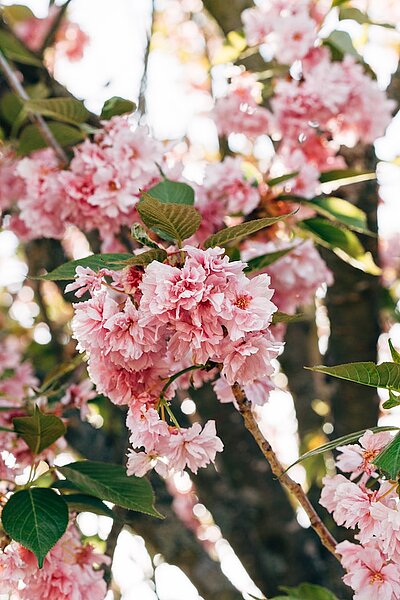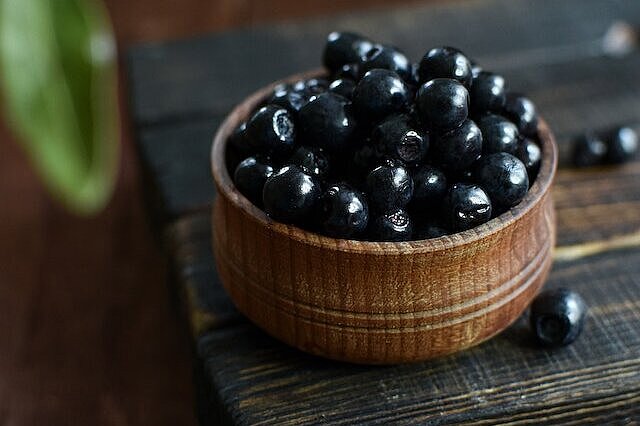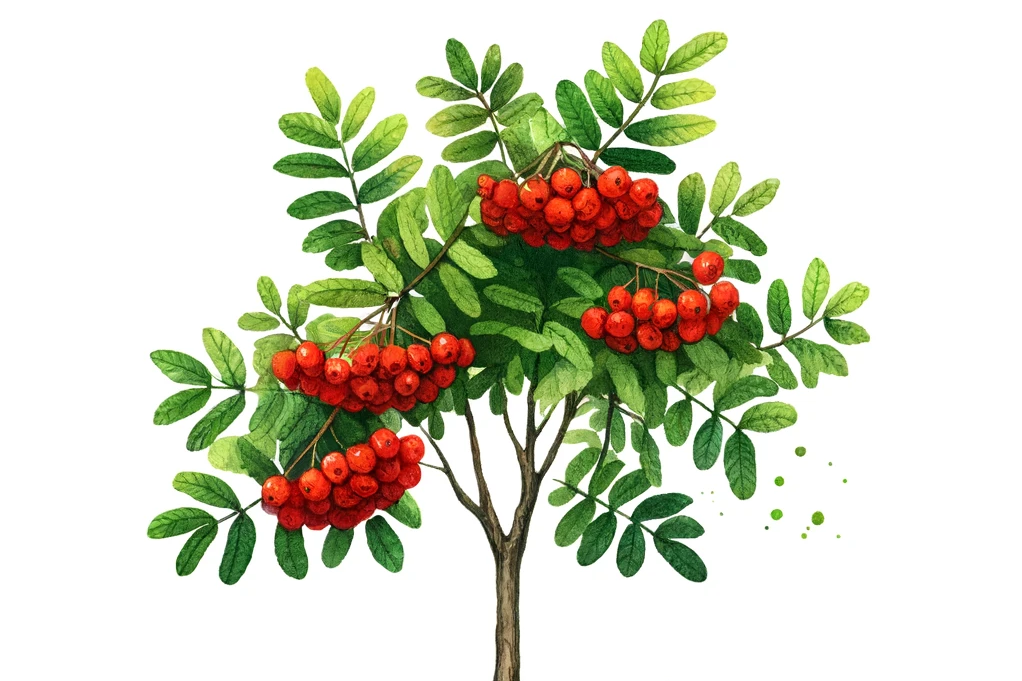Common weeping cherry

As a dog owner, you want to make sure that your four-legged friend stays healthy and happy. An important part of this responsibility is knowing which plants are safe for your dog and which are potential hazards. One plant that can be found in many gardens and parks, but is often overlooked, is the common weeping cherry (Prunus padus). But what exactly is this plant and why should you be aware of it when it comes to your dog's health? In this article, you'll find out everything you need to know about the common weeping cherry, its properties and the potential risks and benefits for dogs.
What is the common weeping cherry?
The common weeping cherry, also known as the wild cherry or hail cherry, is a deciduous tree from the rose family(Rosaceae) that is widespread in Europe. It is often prized for its beautiful white flowers in spring and its small black fruits in autumn. The tree reaches a height of up to 15 meters and prefers moist soils near rivers or wooded areas.
The fruits of the common weeping cherry are small, spherical drupes arranged in clusters. Although they are edible for humans in small quantities when cooked or processed, they pose a potential danger to dogs. The plant contains various chemical compounds that can be toxic under certain conditions.
Benefits of common weeping cherry for dogs
Although common cherry is considered potentially dangerous, there are also some positive aspects that can be considered. However, these benefits do not relate to the direct consumption of the plant by dogs, but rather to the ecological benefits it can provide.
1. ecological benefits for the habitat
The common weeping cherry plays an important role in its natural habitat. It provides food and shelter for a variety of birds and insects. If you have a garden that is visited by native plants and animals, the presence of weeping cherry can support the ecosystem. A rich and healthy ecosystem in your garden can also indirectly benefit your dog by helping to maintain a balanced and healthy environment.
2. natural pest control
The leaves and flowers of the common weeping cherry attract insects such as ladybugs, which in turn control pests such as aphids. A healthy garden ecosystem can help reduce the use of chemical pesticides that could be harmful to dogs. In this regard, bird cherry can help create a safer environment for your dog.
Disadvantages of common weeping cherry for dogs
While the environmental benefits of common weeping cherry are positive, the potential risks to dogs outweigh the benefits in most cases. Here are the main dangers you should be aware of:
1. toxins in the plant parts
The common weeping cherry contains several toxic compounds, including cyanogenic glycosides, in particular amygdalin. This substance is released when the plant is chewed or digested and can lead to cyanide poisoning. Cyanide inhibits cell respiration, which can ultimately lead to a life-threatening situation. The seeds, bark and leaves of the plant are particularly poisonous, but the fruits should not be eaten either.
2 Symptoms of poisoning
If your dog eats parts of the common bird cherry, the symptoms of poisoning can quickly appear. These include
In severe cases, it can lead to seizures, coma and even death if not treated immediately. It is important that you consult a vet immediately if you suspect poisoning.
3 Difficult to control spread
The common weeping cherry tends to spread quickly, especially in humid environments. This can cause the tree to grow uncontrollably in your garden or around your home, increasing the danger to your dog. Regular inspection and maintenance of the garden is necessary to ensure that no unwanted plants, including weeping cherry, are growing near your dog.
The common weeping cherry is a plant that is native to many parts of Europe and can play an important role in the ecosystem. However, the risks to dogs far outweigh the potential benefits. The plant contains toxic compounds that can lead to serious health problems if ingested. As a responsible dog owner, you should ensure that your dog does not have access to this plant and regularly check your garden for potential sources of danger.
If your dog has nevertheless eaten parts of the bird cherry, you need to act quickly. A visit to the vet is essential to treat possible poisoning. This way you can ensure that your dog can continue to lead a healthy and happy life.
If you notice any signs of hypersensitivity or poisoning in your dog, you should see your vet immediately. We are not a substitute for a vet, but we try to be as accurate as possible. Every dog reacts differently and we recommend you get a second opinion or consult your vet if in doubt.
Stay healthy and take good care of your four-legged friend!😊
Similar to Common weeping cherry
Blackcurrants (botanical name: Ribes nigrum) belong to the gooseberry family and are related to red and white currants. They originally come from northern, eastern and central Europe and have been...
The short answer is unfortunately no: elderberries are not safe for dogs. This is because the seeds contain a hydrocyanic acid glycoside called sambunigrin, which is poisonous to dogs. In addition,...
The rowan tree (Sorbus aucuparia) belongs to the rose family and to the genus of rowanberries. It is widespread throughout Europe and large parts of Asia and is very adaptable to different locations...
Rosehips are the seed capsules of wild roses that ripen after flowering in the fall. They contain many small, hard seeds surrounded by soft, juicy flesh. Rosehips are rich in vitamin C, which...



